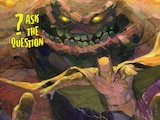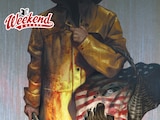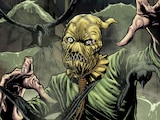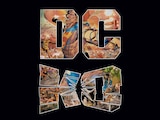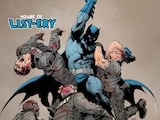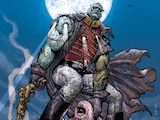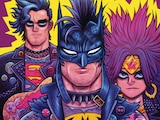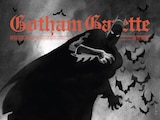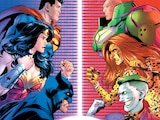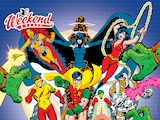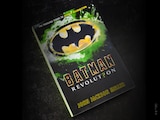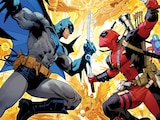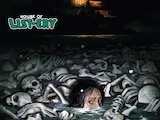Each Friday, we'll be letting a different DC.com writer share what they'll be reading over the weekend and why you might want to check it out. Here's this week's suggestion for a perfect Weekend Escape!
Time can be your worst enemy when you’re waiting for Friday to arrive, which makes this week’s edition of Weekend Escape all the more fitting. We’re focusing on Zero Hour: Crisis in Time, a big crossover that shook the fabric of time and reality in the DC Universe.
Since this month is the 30th anniversary of the now legendary event, the time is perfect for revisiting it—or reading it for the very first time. Fortunately, that’s simple since the limited series is available on DC UNIVERSE INFINITE. However, there is a twist…
If you’re reading the individual issues, you’re going to start with Zero Hour #4. From there you’ll move on to Zero Hour #3 and so on, until you get to Zero Hour #0. That’s right, the series was famously released with reverse numbering, like a countdown. Of course, if that format is confusing, you can always just grab the collected edition.
The Premise:

Reality is broken. Heroes from alternate timelines have begun popping up throughout the DC Universe. Timelines are blending, leaving the DC heroes confused and disoriented. Meanwhile, a temporal wave is moving from the end of time, erasing history and remaking the universe.
The Time Trapper has been killed, the Justice Society has been taken down, and this is just the beginning. The heroes of the DCU band together to stop this threat and restore their timeline, but they’re in for far more than they bargained for.
This is more than another Crisis event or a time-travel story. Zero Hour pushes the heroes to their limit as they face a villain that will challenge them to their breaking point…
Let’s Talk Talent:

This story is written and penciled by Dan Jurgens, one of the architects of the ‘90s era DC Universe. Jurgens is best known for providing the story and art for 1992’s Superman #75, the issue where the Man of Steel died while fighting Doomsday. Zero Hour was published two years later, and it’s every bit as ambitious as his earlier work on Superman. The script tells a world-ending story with high stakes, but still manages to make the conflict feel personal.
Jurgens is able to juggle numerous characters without sacrificing storytelling and personal moments. This isn’t easy to do, especially when you’re telling a story involving almost every hero in the DCU. There are little moments like Guy Gardner pondering altering history to save Hal Jordan, and Donna Troy reacting to the (supposed) death of Wally West. These moments are sometimes only one line or panel, but Jurgens makes them effective.
Jurgens’ artwork is inked by Jerry Ordway, another artist who helped define DC in the ‘90s. Ordway’s inks beautifully compliment Jurgens’ pencils, resulting in a visually satisfying comic. Just look at some of the splash pages and see for yourself.
A Few Reasons to Read:

- Zero Hour gives readers fun multiversal mayhem decades before every other franchise began telling their own multiverse story. For example, one of the centerpieces of this story is a reality-displaced Batgirl. This version of Barbara Gordon comes from a timeline where she was never shot and disabled by the Joker. She must help the heroes restore the timestream, even if it means she’ll cease to exist.
- The storyline contains a surprise twist. The heroes initially believe that a villain named Extant is engineering the conflict, but they eventually learn that a secret adversary has been pulling the strings. We won’t give away who Zero Hour’s true villain is here, but the revelation has major ramifications for the DC Universe for decades to come.

- If you’re a ’90s comics fan, then you’ll love this limited series. Zero Hour is a perfect snapshot of ‘90s era DC. We get the battlesuit version of Arsenal, long-haired versions of Superman and Nightwing, and forgotten ‘90s heroes like the Team Titans.
- If you find you enjoy Zero Hour and are looking for more, there are plenty of tie-in issues. A lot of them are great reality mash-ups, like the Conner Kent Superboy meeting the Silver Age Superboy and Tim Drake’s Robin teaming up with Dick Grayson’s earlier Boy Wonder. And we can’t overlook the just-released Zero Hour 30th Anniversary Special, which was co-written and partially drawn by Jurgens and brings the events of Zero Hour into the current DCU.
Why It’s Worth Your Time:

Zero Hour turns thirty this month, making this the perfect time to read (or reread) the crossover event. It’s a great way to look at how the DC Universe has changed in the decades since. Plus, it’s a pivotal turning point in the history of the DCU, particularly for the Green Lantern Corps and the Legion of Super-Heroes. It’s also a fun time-travel and multiverse story that deals with love, loss and redemption. With great art and a thrilling story, it’s easy to see why Zero Hour has stood the test of time (no pun intended).
Zero Hour: Crisis in Time by Dan Jurgens and Jerry Ordway is available in bookstores, comic shops, libraries and digital retailers. It can also be read in full on DC UNIVERSE INFINITE.
Joshua Lapin-Bertone writes about TV, movies and comics for DC.com, is a regular contributor to the Couch Club and writes our monthly Batman column, "Gotham Gazette." Follow him on Twitter at @TBUJosh.
NOTE: The views and opinions expressed in this feature are solely those of Joshua Lapin-Bertone and do not necessarily reflect those of DC or Warner Bros. Discovery, nor should they be read as confirmation or denial of future DC plans.

